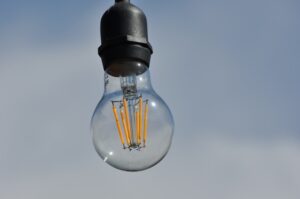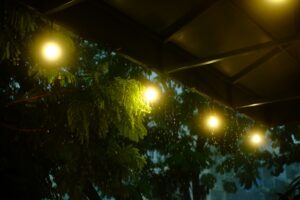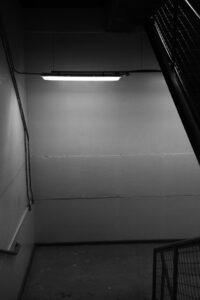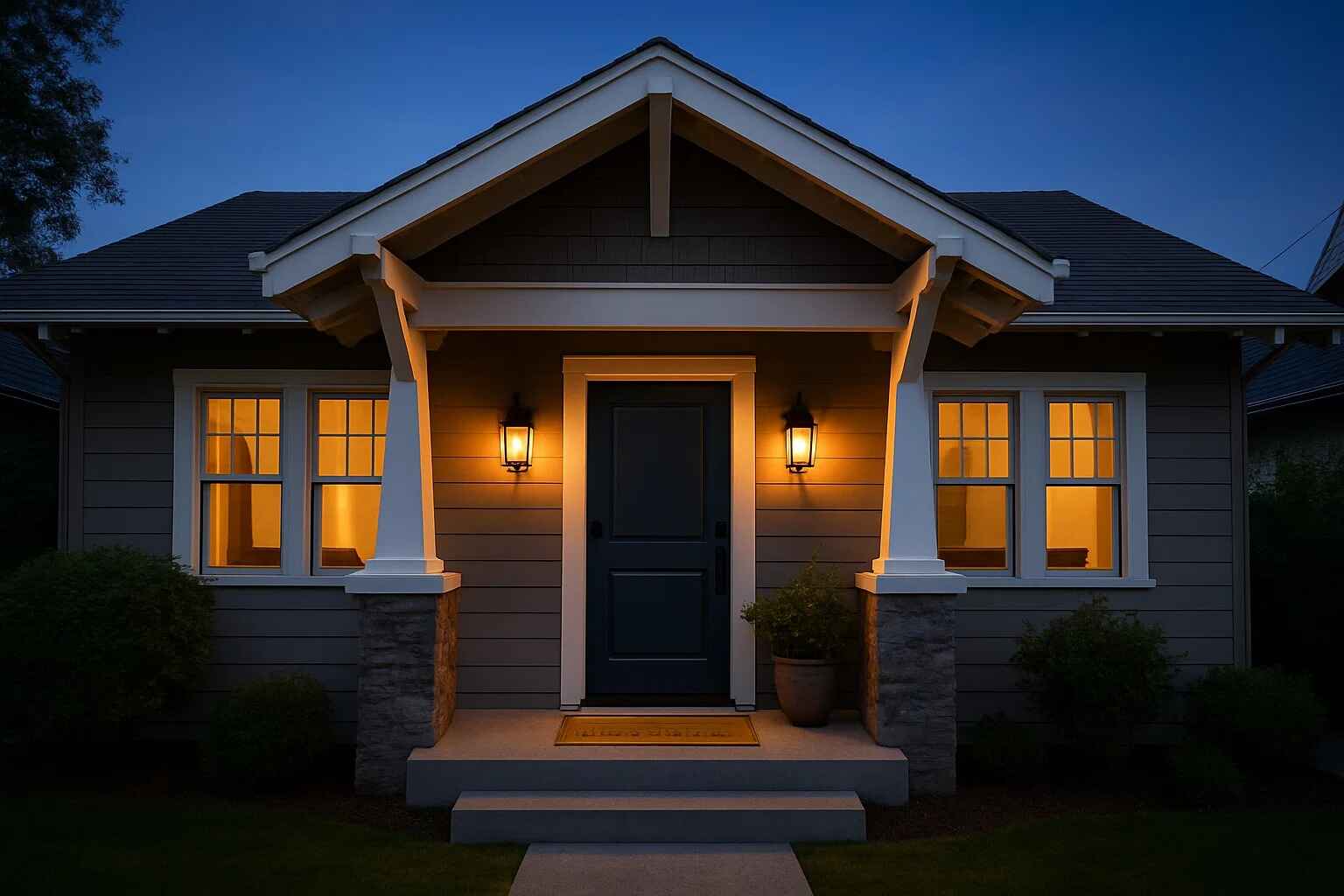Introduction
Your home’s exterior is its first impression. As the sun sets, outdoor wall lighting takes center stage, transforming your property from a simple structure into a welcoming and secure haven. More than just a functional necessity, the right lighting enhances architectural details, defines your landscape, and provides essential safety for pathways and entryways. This guide will walk you through everything you need to know. We will explore various fixture styles, modern lighting technologies, and expert placement strategies. Get ready to create an inviting ambiance that boosts your home’s beauty and security after dark.
Why Outdoor Wall Lighting is Essential for Your Home
Outdoor wall lights, or sconces, are fundamental to exterior design. They serve multiple critical purposes beyond simple illumination. Strategically placed lighting deters potential intruders by eliminating dark shadows. It also provides safe passage for you and your guests by lighting up steps, walkways, and doorways. Aesthetically, these fixtures act as jewelry for your home’s facade. They highlight unique textures and colors, creating depth and dimension. Ultimately, a well-lit home is a safer, more attractive, and more valuable property.
Exploring Different Types of Outdoor Wall Lights
Not all wall lights are created equal. The type you choose depends on your home’s architecture and your lighting goals. Understanding the basic categories will help you make an informed decision.
Up and Downlights (Sconces): These versatile fixtures cast light both upward and downward. They create a beautiful wash of light that accentuates textured surfaces like stone or brick.
Wall Wash Lights: Designed to flood a flat wall with a wide, even glow, wall washes are perfect for highlighting a clean, modern facade or a detailed garden wall.
Flush-Mount & Semi-Flush-Mount: These lights sit close to the wall, offering a streamlined look ideal for narrow spaces like side alleys or covered porches where protruding fixtures might be obstructive.
Lantern-Style Sconces: A timeless choice, lanterns evoke a classic, traditional feel. They often feature glass panels and are perfect for Colonial, Craftsman, or Victorian-style homes.
Choosing the Perfect Design Style
Your outdoor lighting should complement your home’s architectural style. A cohesive look enhances curb appeal and creates a harmonious exterior.
Modern and Contemporary: Think clean lines, geometric shapes, and minimalist designs. Materials like brushed nickel, black steel, and frosted glass are common.
Traditional and Classic: Ornate details, dark finishes like oil-rubbed bronze, and seeded glass panels define this style. It suits homes with historical character.
Rustic and Coastal: For farmhouse or cottage-style homes, consider fixtures with weathered finishes, lantern designs, or nautical elements like rope details.
Transitional: This style blends traditional and contemporary elements, offering a timeless look that works with many home designs.
Key Factors in Selecting Your Fixtures
Choosing a fixture involves more than just style. Several practical factors ensure your lights are beautiful, durable, and effective.
-
Durability and Weather Resistance: Always look for fixtures rated for wet or damp locations. This ensures they can withstand rain, snow, and humidity.
-
The Right Size and Scale: A fixture that is too small will look lost, while one that is too large can be overwhelming. Proportion is key to a balanced look.
-
Bulb Type and Brightness (Lumens): LED bulbs are the standard for their energy efficiency and long life. Consider the brightness you need for each location.
Strategic Placement for Maximum Impact
Where you place your lights is as important as the lights themselves. Thoughtful placement ensures optimal functionality and aesthetic appeal.
Flanking the Garage Door: This placement provides excellent security lighting and creates a balanced, symmetrical look that is visually pleasing.
Illuminating the Front Entryway: Positioning lights on either side of your front door is both welcoming and practical. It ensures guests can see clearly and adds a layer of security.
Lighting Up Pathways and Steps: Wall lights mounted on retaining walls or the side of the house can safely illuminate changes in elevation and walking paths.
Highlighting Architectural Features: Use wall washers or uplights to graze the surface of a unique stone wall, a column, or an interesting architectural detail.
Understanding Light Bulb Technology
The right bulb affects the quality of light, your energy bill, and maintenance needs. Modern options offer significant advantages.
Why LED is the Best Choice: Light Emitting Diode (LED) bulbs are incredibly energy-efficient and have a very long lifespan. They are available in a wide range of color temperatures and brightness levels.
Color Temperature (Kelvin) Explained: Measured in Kelvins (K), this refers to the light’s color appearance.
-
Warm White (2700K-3000K): Creates a cozy, inviting glow. Ideal for residential settings.
-
Cool White (3500K-4100K): A brighter, more alert light, better for security-focused areas.
Lumens vs. Watts: Lumens measure brightness, while watts measure energy consumption. With LEDs, you get more lumens per watt, meaning more light for less energy.
The Rise of Smart Outdoor Lighting
Technology has revolutionized outdoor lighting. Smart systems offer unparalleled convenience, control, and energy savings.
Control Lights from Anywhere: Use your smartphone to turn lights on or off, even when you’re away from home. This is a powerful security feature.
Setting Schedules and Timers: Automate your lighting to turn on at sunset and off at sunrise, or set custom schedules to fit your routine.
Integrating with Home Security Systems: Many smart lights can integrate with security cameras and motion sensors, triggering lights to flash if an alarm is detected.
Voice Control Capabilities: Use voice commands via Amazon Alexa, Google Assistant, or Apple HomeKit to control your outdoor lighting hands-free.
Energy Efficiency and Sustainability
Eco-friendly lighting is good for the planet and your wallet. Making smart choices reduces your carbon footprint and saves money.
Benefits of Solar-Powered Wall Lights: These fixtures are easy to install and cost nothing to operate. They are a great solution for areas with ample sunlight.
Motion Sensors and Dimmers: Adding motion sensors ensures lights are only on when needed. Dimmers allow you to adjust brightness, saving energy and creating ambiance.
The Long-Term Savings of LED: While the initial cost may be higher, the exceptional lifespan and low energy use of LEDs lead to significant long-term savings.
DIY Installation vs. Hiring a Professional
Installing outdoor wall lighting can be a rewarding DIY project, but it’s not without risks. Knowing when to call a pro is crucial.
Basic Steps for a DIY Installation: This typically involves turning off power, mounting the fixture, connecting wires (black to black, white to white, ground to ground), and sealing it properly.
When to Call a Licensed Electrician: If you are uncomfortable working with electricity, need to run new wiring, or are installing a complex smart system, hiring a professional is the safest choice.
Ensuring Electrical Safety: Always check local building codes and obtain any necessary permits. Use a voltage tester to confirm the power is off before starting any work.
Maintenance Tips for Long-Lasting Lights
Regular maintenance keeps your fixtures looking new and functioning properly for years. A simple routine is all it takes.
Regular Cleaning Routines: Wipe down fixtures with a soft, damp cloth to remove dirt, dust, and cobwebs. Avoid harsh chemicals that can damage finishes.
Replacing Bulbs and Components: Follow the manufacturer’s instructions for replacing bulbs. Check seals and gaskets periodically to ensure they are still weatherproof.
Seasonal Check-Ups: Before winter and summer, inspect your fixtures for any damage, rust, or moisture inside the housing. Address issues promptly.
Budgeting for Your Outdoor Lighting Project
The cost of an outdoor lighting project can vary widely. Setting a realistic budget helps you make choices that align with your finances.
Price Ranges for Fixtures: You can find basic, functional lights for under $50, while high-end, designer, or smart fixtures can cost several hundred dollars each.
Factoring in Installation Costs: If you hire an electrician, labor costs will be a significant part of your budget. Get multiple quotes for comparison.
Cost-Saving Tips and Tricks: Focus on key areas first, like the front entry. Consider mixing a few statement pieces with more affordable options for secondary areas.
FAQs About Outdoor Wall Lighting
What is the best height to install an outdoor wall light?
A good rule of thumb is to install fixtures so the center of the light is approximately 66 to 72 inches from the ground. For lighting above a garage door, center the light on the door.
How many lumens do I need for outdoor wall lighting?
For general ambient lighting, 50-300 lumens per fixture is sufficient. For security purposes or to light a larger area, you may want 700-1300 lumens. Use lower lumens for ambiance and higher for function.
Can I install an outdoor light fixture myself?
If there is existing wiring and you are comfortable with basic electrical work, yes. Always turn off the power at the circuit breaker. For new wiring, it is strongly recommended to hire a licensed electrician.
What is the difference between wet-rated and damp-rated fixtures?
Wet-rated fixtures are sealed tightly and can withstand direct exposure to rain and snow. Damp-rated fixtures are designed for covered areas like porches where they will not be directly exposed to water.
How do I prevent my outdoor lights from attracting bugs?
Choose LED bulbs with a warmer color temperature (2700K-3000K). Insects are less attracted to warm yellow light than to cool blue light. Also, look for fixtures with sealed casings.
Are smart outdoor lights worth the investment?
For convenience, enhanced security, and potential energy savings, smart lights are an excellent investment. The ability to control and automate your lighting from anywhere offers significant benefits.
Conclusion: Illuminate Your Home’s Potential
Outdoor wall lighting is a powerful tool that seamlessly blends security, safety, and stunning style. By carefully selecting the right fixtures for your home’s architecture, understanding placement strategies, and embracing modern technologies like LED and smart controls, you can create an exterior that is both beautiful and functional. Remember to prioritize durability and proper installation to ensure your lighting stands the test of time. Start by assessing your home’s key areas—the entryway, pathways, and architectural features. A well-executed lighting plan will not only make your home safer but will also dramatically increase its curb appeal and your enjoyment of it after dark.

